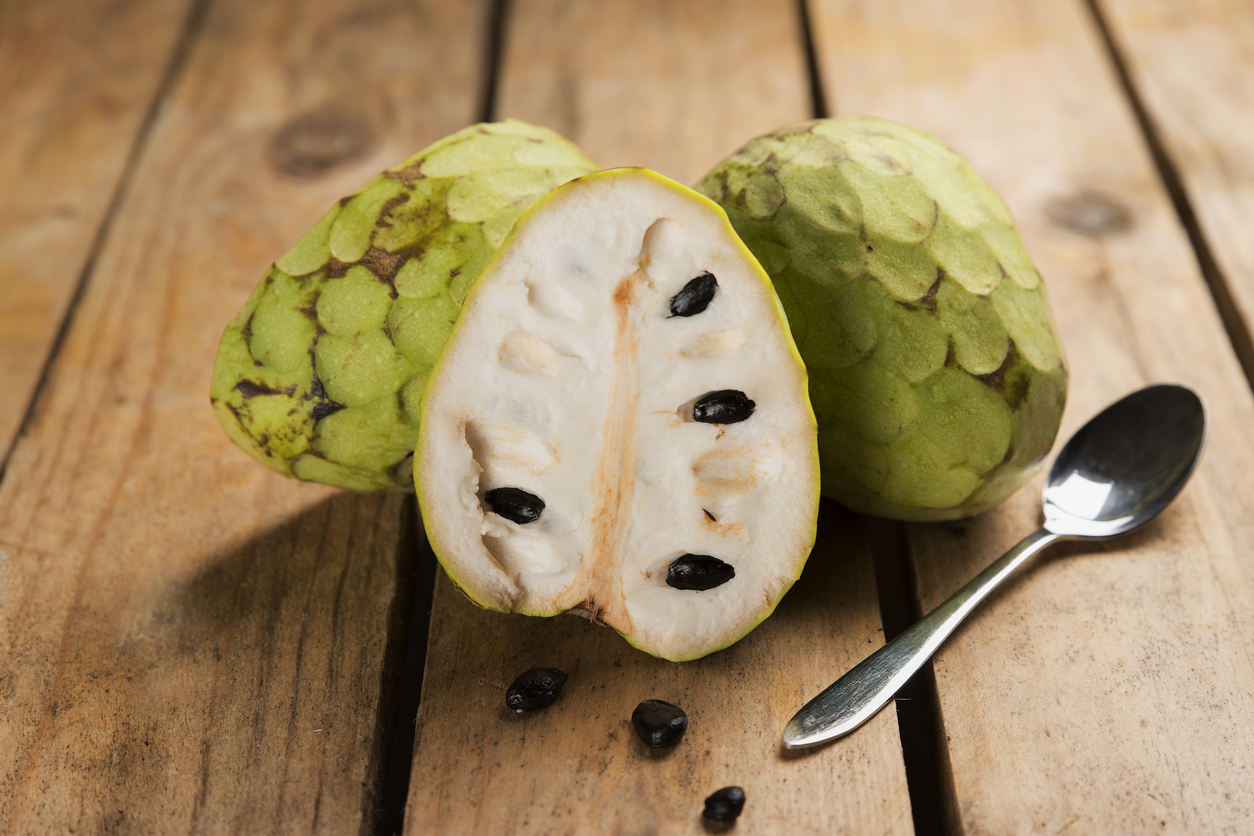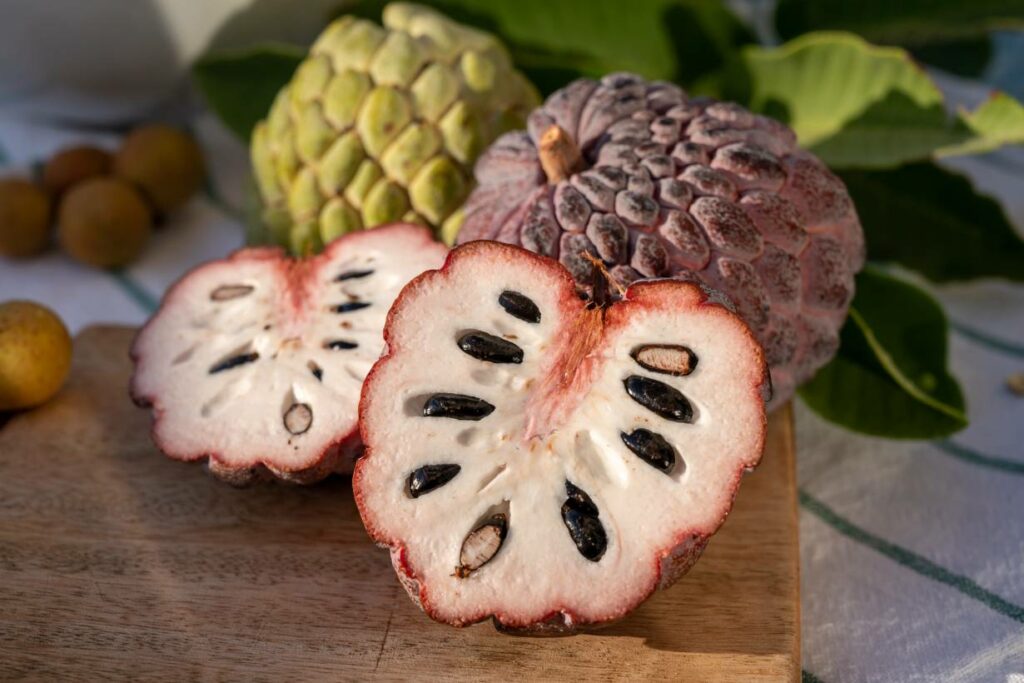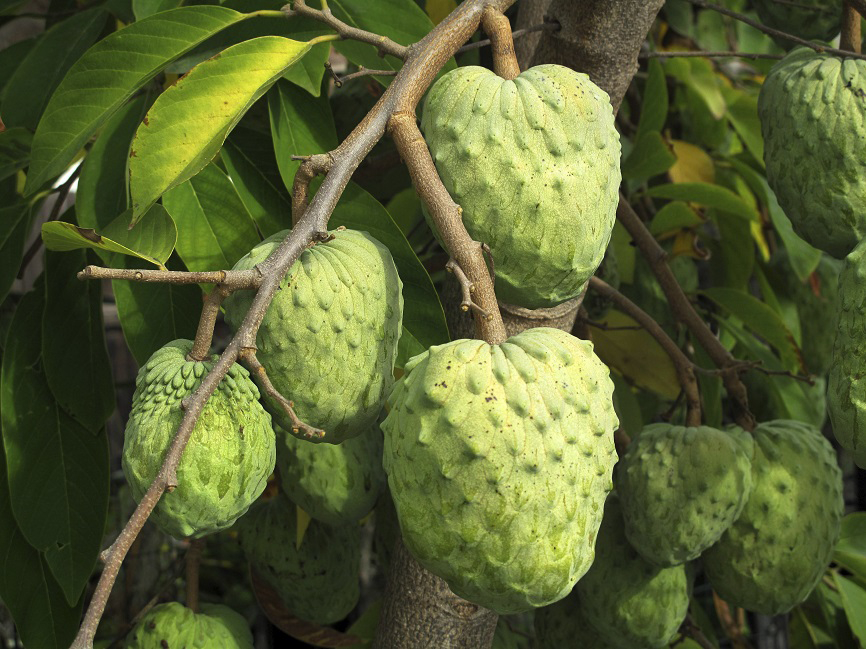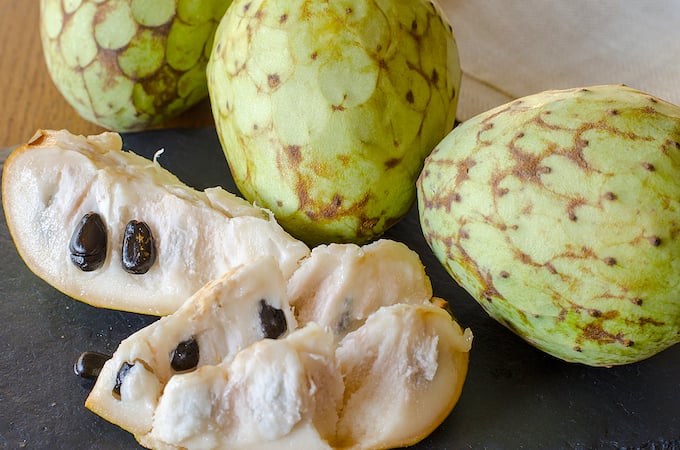Tucked away in lush orchards along Spain’s southern coast lies a fragrant secret: cherimoya (Annona cherimola), also known as the “custard apple.” With creamy pulp bursting with banana, pineapple, and strawberry notes, this delicate fruit has captivated gourmands and tropical fruit lovers alike. But beyond its exotic appeal, cherimoya boasts a rich history, global distribution, and thriving industry—but one country stands above all others. So, which country is the largest cherimoya producer? The answer is Spain.
Spain’s Cherimoya Crown

Leading Figures
- Southern Spain—Andalusia (Granada, Málaga) hosts over 3,000 hectares of cherimoya orchards, yielding roughly 40,000 tonnes annually. That’s about 49 million € in economic value freshplaza.com.
- Spain’s output consistently surpasses all other nations, making it the world’s top commercial cherimoya producer .
Protected Excellence
- The Fino de Jete variety, grown along Granada-Málaga’s “tropical coast,” holds a Protected Designation of Origin (PDO) thanks to its premium quality freshplaza.com+2en.wikipedia.org+2pmc.ncbi.nlm.nih.gov+2.
- Handpicked and carefully packed within 24 hours, it’s Spain’s cherimoya gold standard .
Local Market Success
- Although 85–90% of production satisfies domestic consumers, Spain also exports 10–15% of its crop.
- Despite its local popularity, nearly 40% of Spaniards remain unfamiliar with cherimoya, highlighting vast potential for growth freshplaza.com+1cabidigitallibrary.org+1.
The Global Cherimoya Landscape

Surpassing Latin America’s Origins
| Country | Area Cultivated (ha) | Annual Production (t) |
|---|---|---|
| Peru | ~1,600 ha | ~20,000 t (40% in Lima) en.wikipedia.org+15freshplaza.com+15fr.wikipedia.org+15 |
| Ecuador | ~1,440 ha | — |
| Chile | ~1,200 ha | — |
| Bolivia | ~1,000 ha | ~7,000 t |
| Spain | ~3,000 ha | ~40,000 t |
| California, USA | 120 ha | ~1,000 t annually |
- Though cherished since antiquity in Andean countries, Spain now surpasses all in both area and yield specialtyproduce.com+5openknowledge.fao.org+5freshplaza.com+5.
- Other growers (Chile, Peru, USA) have smaller, often regionally limited, production.
Why Spain Tops Cherimoya Production

- Ideal Climate & Terrain
Southern Spain’s Mediterranean foothills offer steady warmth, moderate humidity, and fertile soils ideal for cherimoya orchards freshplaza.com. - Focused Cultivar Development
Spain breeds elite lines—like Fino de Jete—alongside new dwarf genotypes suited for marginal soils and commercial growing pmc.ncbi.nlm.nih.gov+1en.wikipedia.org+1. - Strong Market Infrastructure
With PDO status, advanced post-harvest handling, and EU funding, Spain ensures high-quality fruit reaches premium markets tridge.comfoods.pe+6freshplaza.com+6reddit.com+6. - Export-Ready Systems
Well-organized export pipelines serve European destinations—France, Germany, UK—year-round .
Cherimoya: From Orchard to Table
- Flavor & texture: Creamy custard-like flesh with multibenefit vitamins A, B, C, potassium—fairs better than many tropical fruits .
- Culinary versatility: Eaten raw, blended into ice cream, added to smoothies, or used in chilled sauces and fruit salads.
- Health appeal: Rich in B-vitamins and dietary fiber—cherimoya is also labeled a “nutraceutical” by nutrition experts es.wikipedia.org+14specialtyproduce.com+14reddit.com+14.
Challenges & Opportunities

- Perishability: Cherimoya ripens off-tree and must be harvested at peak firmness for export stability reddit.com+11fao.org+11sciencedirect.com+11.
- Limited consumer awareness: Nearly half of Spaniards do not recognize the fruit—tumult but opportunity.
- Scaling exports: Spain exports only 10–15%, suggesting strong room for market growth .
- Environmental stress: Water scarcity in Andalusia threatens production sustainability—local irrigation improvements are key freshplaza.com.
The Future of Spain’s Cherimoya Industry

- Export expansion: Targeting Northern Europe and North America—leveraging health trends in fresh tropical fruits.
- Consumer education: Chef-led recipes and gourmet exposure can drive broader awareness and adoption.
- Varietal breeding: Development of more frost-tolerant, compact, and disease-resistant cultivars for expanded growing zones.
- Agrotourism: Orchard tours and “pick-your-own” experiences highlight cherimoya’s uniqueness, supporting rural economies.
Final Verdict
Spain is undeniably the world’s largest cherimoya producer, cultivating over 3,000 ha and harvesting around 40,000 tonnes annually—outpacing its nearest rivals by 2–3 times. Anchored in Andalusian orchards, protected designations, EU-supported marketing, and rich consumer appeal, Spain’s cherimoya sector stands strong.
Yet beneath its surface lies potential waiting to be unlocked: expanding exports, breeding innovation, culinary accessibility, and sustainable irrigation. Looking ahead, Spain seems ready not only to maintain its lead—but to share the custard-apple love worldwide.




